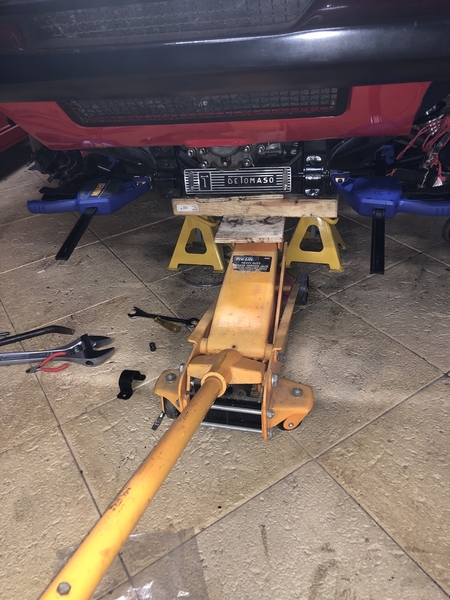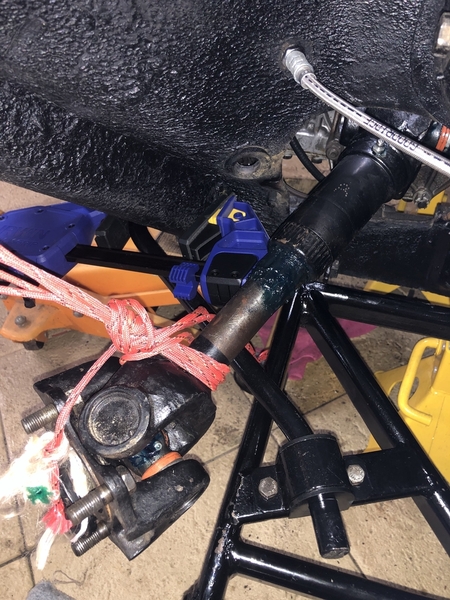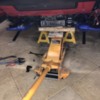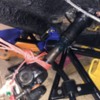Not trying to make things worse, but the 'bolts' that hold the central section of the rear bar to the car (and which take ALL of the swaybar weight transferred) are light duty grade-5-at-best. They break regularly and are repaired in various ways. And they aren't plain hex-head bolts. They are weld-on bolts. inside the rear crossmember assembly, the "bolt" heads are round and are spot welded at their periphery touching the crossmember.
So do not try brutalizing a poorly fitting bar. Besides breaking in two, the three tiny spot-welds holding each 'bolt', will crack. If you try drilling a hole thru them to thread & use a stud, the heads break loose and cannot be tightened. The best substitute I found so far for broken fasteners was to drill a large hole in the crossmember from the ZF side, knock out the broken or loose head and substitute a one-size larger grade 8 allen bolt, which can be inserted and tightened thru the access hole you just drilled. If you do this, the central holding clamp holes, of course must be made oversized to match. As mentioned, it is FAR better to re-bend the swaybar to fit the car, than to try to pull the bar in place & risk 'bolt' breakage.
All this comes from the chassis distortion that happens when NOT using an adjustable rear bar-brace above the bellhousing. This subframe twist shows up as excess rear tire camber, and a stock upper brace-bar simply cannot resist this. Large, sticky rear tires on a car driven hard (as it should be!) makes the camber gain and frame distortion progressively worse. There are several POCA articles written (in the POCA Archives) on adjustable upper bay-braces, rear camber fixes and using bigger swaybars in the rear. Some owners fix this permanently by seam-welding the entire rear of the car. The gain in stiffness is reportedly pro-race-worthy. Others make a whole new rear crossmember.





